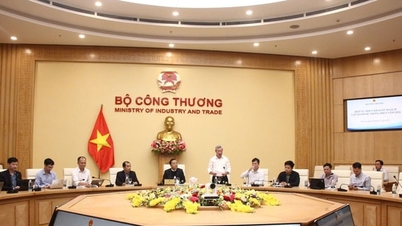In the document submitted to the Government to amend and supplement regulations for vertical organizations of the ministry, the Ministry of Finance proposed to rearrange regional tax branches to ensure management consistent with provincial-level administrative units.
Specifically, the current 20 regional tax branches will be reorganized into 34 provincial and centrally-run city tax branches (an increase of 14 units).
Responding to the press on the morning of June 25, Mr. Mai Son, Deputy Director of the Tax Department (Ministry of Finance) said that organizing tax agencies in association with 34 newly established localities will create many advantages for the tax industry.
According to Mr. Son, the organization of tax authorities in a vertical system is consistent with international practice, because this helps to clearly define the tax authority in international transactions, tax treaties and cross-border activities. At the same time, this model allows tax authorities to cover all revenue sources, affirming the leading role of the central budget, and increasing the initiative of local budgets.
Thanks to that, the tax policy system, administrative reform and business processes are operated synchronously and consistently throughout the entire tax system.
However, in Vietnam, the tax authority is associated with the local government because tax management and tax collection are based on the socio -economic situation of the whole country as well as each locality. The subjects of tax management and collection by the tax authority are very broad. The scope of management includes taxes related to people, individuals, non-agricultural households, business households, enterprises, corporations, general companies and economic zones.
"Therefore, organizing 34 tax units will create many advantages for tax management and tax agency development, creating convenience for people and businesses," Mr. Son emphasized.
The Deputy Director of the Tax Department said that the regional tax branch model also has its own strengths, but still needs to be streamlined to improve the efficiency of the apparatus. He admitted that the initial transition process will encounter some difficulties due to the system change, while the majority of tax workers are women.
"The construction of a large database is underway and has entered its final stage. This system will support the process of streamlining the apparatus, modernizing tax management, and minimizing the need for tax officers to move around," said Mr. Son.
Mr. Son also affirmed that the reorganization from 20 regional tax branches into 34 tax branches at the provincial and centrally-run city levels basically does not affect businesses and taxpayers.
Because, when new ward and commune administrative units are established, taxpayers will be transferred to the new area, so there will be no major disruption to tax management. Even when there is no change in administrative boundaries, the tax industry is still implementing major reforms such as modernizing the system, changing identification and personal tax codes.
The Deputy Director of the Tax Department also said that the tax industry will provide full and timely information so that taxpayers can clearly understand the new management unit, ensuring no disruption.
"Tax officials will move to the new location so taxpayers will not feel any change or disappointment in the process of fulfilling their tax obligations," said Mr. Son.
From March 1, 2025, the General Department of Taxation (Ministry of Finance) officially transformed its organizational model into the Tax Department, operating under a three-level model including: a central agency with 12 focal points of departments and offices; 20 regional tax branches and 350 district-level tax teams. This model aims to streamline the apparatus, increase management efficiency, in line with the orientation of reorganizing provincial-level administrative units and the two-level local government model. However, according to the Ministry of Finance, immediately after the reorganization of the apparatus, about 4,500 civil servants in the tax sector submitted applications for resignation under the streamlining of staff as prescribed in Decree No. 178/2024 (amended and supplemented by Decree 67/2025/ND-CP). This number is equivalent to more than 10% of the total number of civil servants in the entire tax sector, of which the tax branch level alone has been assigned more than 37,000 positions. Notably, the highest rate of civil servants resigning is concentrated in mountainous provinces such as Cao Bang, Bac Kan, Yen Bai , Lao Cai, Son La, Lai Chau, Dien Bien at over 30%. According to the explanation, in mountainous, border and remote areas such as: Tax Department of Region VI (managing Bac Giang, Lang Son, Cao Bang, Bac Kan), Tax Department of Region VII (Thai Nguyen, Tuyen Quang, Ha Giang), Tax Department of Region IX (Son La, Dien Bien, Lai Chau),... the distance from the place of residence to the branch office is up to more than 100km, traffic is difficult. Travel time lasts from 2-4 hours per day, mainly by personal vehicle. |
(According to Vietnamnet)
Source: https://baoyenbai.com.vn/12/352279/Ly-do-Bo-Tai-chinh-de-xuat-lap-34-don-vi-thue-cap-tinh.aspx







































































































Comment (0)